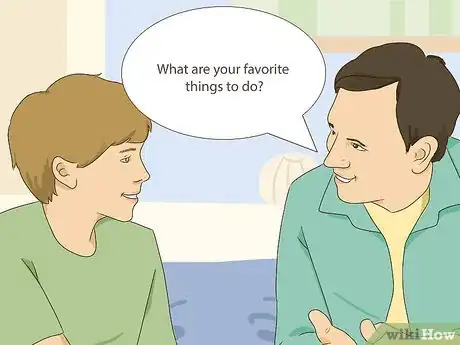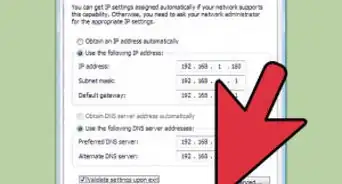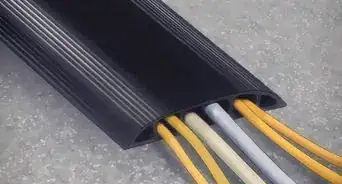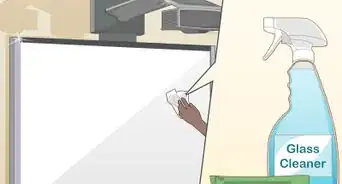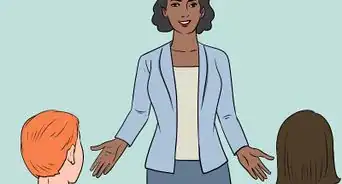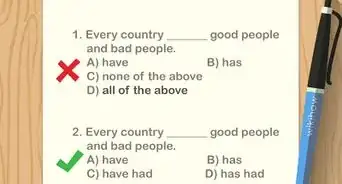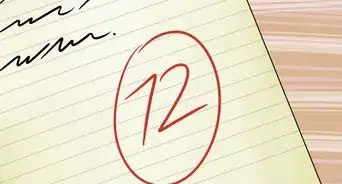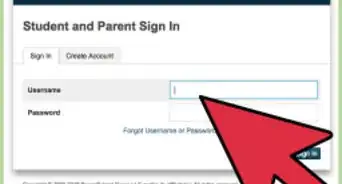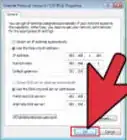This article was co-authored by Emily Listmann, MA. Emily Listmann is a private tutor in San Carlos, California. She has worked as a Social Studies Teacher, Curriculum Coordinator, and an SAT Prep Teacher. She received her MA in Education from the Stanford Graduate School of Education in 2014.
There are 7 references cited in this article, which can be found at the bottom of the page.
wikiHow marks an article as reader-approved once it receives enough positive feedback. In this case, 90% of readers who voted found the article helpful, earning it our reader-approved status.
This article has been viewed 88,902 times.
A slow learner is a child who learns at a pace a little behind others of their age and grade level. Slow learners are not always learning disabled, and may have ordinary lives outside of the classroom. However, academic subjects are a challenge for them. To help slow learners, take a variety of approaches to teaching important subject matter. Get support for the students inside and outside the classroom. Most importantly, encourage slow learners by working with them patiently and by celebrating their successes.
Steps
Teaching to the Slow Learners in Your Class
-
1Repeat each learning point more than you normally would. Slow learners need to hear information a few times more than other students in order to understand it.[1]
- Keep the other students interested by asking them questions and having them answer. Echo back their answers and explain how they relate to the point you are trying to teach.
- For instance, in a lower elementary class, you might say, "Saranda says 2x2 is 4, and she's right. We know this because 2 and 2 is 2 + 2, and that's 4."
- With older classes, you can reinforce learning points by leading discussions that encourage students to repeat the learning points. Ask questions about the subject matter, and ask students to explain their reasoning when they answer you.
-
2Use audio and visual aids. Slow learners may struggle with basic skills such as reading, so movies, pictures, and audio can help them learn things that they would not pick up from reading alone. Use various media to repeat the information you want them to learn.[2]
- For instance, if you are teaching conjunctions to elementary students, you can supplement your explanations and worksheets with the classic "Conjunction Junction" cartoon from Schoolhouse Rock!
- When teaching a novel to high school students, help slow learners by passing out worksheets and supplementary materials with visuals, such as family trees of the characters involved, timelines of the plot, and images of historical maps, costumes, and houses from the period of the novel.
- You may even have all your students take a learning style quiz to find out what types of learners you have and what approaches would be the most effective.[3]
Advertisement -
3Guide students to the main points of lessons and tests. Slow learners may struggle to identify the main points of a lesson or a test, and may be overwhelmed by supplementary information. When teaching, make sure to identify and emphasize the learning points. Don't overwhelm your slow learners by moving on too quickly or asking them to learn many details beyond the main points.[4]
- Before you start a lesson, summarize the main points so all your students know what they should be paying attention to.
- Provide study guides for tests so that slow learners know what information they need to concentrate on.
- Assign quicker learners supplementary reading and worksheets that fill them in on supplementary details about the topic.
-
4Use real-life examples when teaching math. Introduce new math concepts by applying them to situations that your students can relate to. Use drawings and props, like pennies, beans, or marbles, to help students visualize the numbers.[5]
- For instance, to introduce division to elementary students, draw a circle on the board and tell students it is a cake that has to feed 6 people equally. Then draw lines to divide it into 6 slices.
- For older students, some concepts may be more confusing using real-life scenarios. For concepts such as solving for an unknown variable, teach the form directly.
- Slow learners may be missing math information from previous years. If a slow learner is struggling with a new concept, check to make sure they know how to do more basic skills.
-
5Teach reading skills. Slow learners may struggle to read "automatically," the way their peers do. To help them catch up, teach reading skills to your whole class, or to a small group of slow-readers while other students work on supplementary projects.[6]
- Encourage struggling readers to follow the words with their finger across the page as they read.
- Teach students to recognize phonemes and to sound-out unfamiliar words.
- Help your students with reading comprehension by training them to ask questions, such as "How does this character feel?" "Why did the characters make this decision?" "What could happen next?"
- Older students who are slow learners may also be helped by learning how to summarize chapters and otherwise annotate their reading.
-
6Give your class lessons on study skills. Slow learners need to go over material more than other students. Help them speed up their study time by teaching them efficient methods of outlining, note-taking, and memorizing.[7]
- Give your class demonstrations of note taking and outlining.
- Teach students to break down big tasks into small pieces so they aren't overwhelming.
- Teach them how to memorize using mnemonic devices. For instance, "Never Eat Shredded Wheat" is a way to remember the directions "North, East, South, and West."
Facilitating Success in the Classroom
-
1Schedule daily reading. Slow learners need a lot of reading practice. Schedule sustained, silent reading time for your students every day. Provide a variety of reading materials, including books a little below grade level. Graphic novels may also be engaging for slow readers.[8]
-
2Assign peer tutors and homework buddies. Rather than encouraging competition among your students, facilitate a culture of mutual helpfulness. Put your students in pairs so they can help one another learn new materials. Alternatively, you can train some of your quicker and more patient students to be "peer tutors," students who help other students understand their assignments. Assign jobs to all your students if you do this: put some in charge of passing out papers or feeding a class pet, for instance.[9]
-
3Give slow learners work that plays to their strengths. Slow learners may become discouraged at having to work longer at things than other students. Provide them with daily breaks, and chances to excel. Identify areas where these students shine, and offer them the opportunity to pursue these activities in between more difficult tasks.[10]
- For instance, a slow learner may be skilled at drawing, at sports, or at organizing. They may enjoy helping in the classroom, tutoring younger kids, or leading a team. Figure out the skills they take pride in, and give them opportunities to employ them.
-
4Praise their successes. When a slow learner completes a task, masters a concept, or otherwise triumphs, praise them wholeheartedly. You can praise them for trying, but don't focus on it: instead, praise them for finishing projects and figuring things out. They'll be less discouraged at how long things take if they know they receive congratulations at the end.[11]
-
5Check for understanding during lessons. Develop a discrete way for your students to let you know how well they are understanding the material you are teaching. Avoid asking students to raise their hand if they do or do not understand. Instead, try giving students numbered or color coded cards to raise to indicate their level of understanding.
- For example, you could provide each student with a red, yellow, and green card. Then, ask students to raise up the card that indicates how well they understand. Red could mean they are confused, yellow could mean they need you to go slower or repeat something, and green could mean that the lesson makes sense so far.[12]
Supporting Your Child
-
1Provide homework help for your child. Your child will benefit from homework help, guidance with studying, and subject-specific lessons. You can be your child's tutor if your schedule permits. Just make sure not to do their assignments for them: instead, sit with them, help them organize their assignments, and walk them through difficult problems.[13]
- If your school has an afterschool program with homework help, consider enrolling your child.
- If you're hiring a tutor, hire an encouraging, positive person who praises their efforts and their successes.
-
2Make their learning part of your family life. Affirm the importance of your child's progress by teaching and reviewing with them as a part of your daily routine. Run through time-tables on car trips, ask them to sound out long words at the store, and link family activities to what they are learning in school. For instance, if they are learning about the Holocaust, you can watch Schindler's List during your family movie night.
-
3Ask their teacher about in-school resources. If your child's school has a resource room, ask their teacher if your child might be eligible for small-group tutoring on subjects they struggle with. Sign up for any supplementary reading or study skills sessions offered by the school's librarian, writing center tutors, or other staff.[14]
-
4Get the child tested for learning disabilities. Some slow learners may also have learning disorders. Diagnosing a learning disability will entitle a student to greater support. It will also help you support your child in areas where they struggle.[15]
- It is not up to the teacher to request this kind of testing. The child’s parents are the ones who need to request it.
- Slow learners will learn evenly across all categories at a rate that is just a little behind their peers, whereas learning disabled students may have uneven strengths and weaknesses.
- However, some slow learners may also struggle with a hidden learning disability.
-
5Arrange an Individualized Education Plan (IEP) for your child. While IEPs are normally designed for children with learning disabilities, slow learners have also been shown to benefit academically and emotionally from individualized education.
- To get an IEP, schedule a conference with your child's teacher.
- Together, arrange to have your child assessed by the school system at no cost to you.
- After assessment, meet with your child's teacher and all relevant staff at your child's school and design an IEP. Before the meeting, make a list of things you want to include.
-
6Help your child set long-term goals. Children who are slow learners often live in the present. Because they are not rewarded by academic subjects, they may not see the point of school, and may complete tasks out of a sense of duty rather than with the goal of building a future. Help your child identify long-term goals, and break down the steps they can take to pursue them.[16]
- Relate their school work to their long-term goals. For instance, if your child wants to own their own store, use business-related examples for math problems, and get them books to read that take place in stores.
-
7Give your child the chance to excel in non-academic arenas. Slow learners tend to live ordinary lives outside of the classroom, and may even excel in many non-academic areas. Celebrate your child's interests by signing them up for extra-curricular activities, such as athletics, arts, or outdoorsmanship. Ask your child what they are interested in, figure out what they are good at, and then get them involved.[17]
- Support your child's social life. Encourage them to ask over friends from school, and get to know their friends' parents.
Community Q&A
-
QuestionWhat should I do with a child who cannot read and write but speaks well?
 Rosebud9Community AnswerFirst, take it slowly with them. Start with basics, like the alphabet or small words. Teach them letter sounds and try to read them books at bedtime or anywhere else. If this doesn't help, you can always go to a learning center or similar place.
Rosebud9Community AnswerFirst, take it slowly with them. Start with basics, like the alphabet or small words. Teach them letter sounds and try to read them books at bedtime or anywhere else. If this doesn't help, you can always go to a learning center or similar place. -
QuestionMy son is ten years old. He's a slow writer (and his writing is bad) and slow in actions, as well as being naughty. Any ideas?
 Community AnswerHe may have dyslexia. Dyslexic children struggle with reading and writing assessments, and their frustration and resulting lack of confidence in school can lead to inappropriate behavior. Have him tested for dyslexia, and share the result with the school if he is so they can put extra support arrangements in place.
Community AnswerHe may have dyslexia. Dyslexic children struggle with reading and writing assessments, and their frustration and resulting lack of confidence in school can lead to inappropriate behavior. Have him tested for dyslexia, and share the result with the school if he is so they can put extra support arrangements in place. -
QuestionMy child is 12 years old and slow at learning in school. The school is recommending hiring a teacher to be teaching only him in a separate class. Will this help him improve as expected? Is home better?
 AnnabelCommunity Answer1-to-1 support can be very beneficial for those with learning needs. The specialist teacher will be able to tailor learning to suit his needs and help him reach is targets. However, if you find that this is not helpful after trying, home may be best.
AnnabelCommunity Answer1-to-1 support can be very beneficial for those with learning needs. The specialist teacher will be able to tailor learning to suit his needs and help him reach is targets. However, if you find that this is not helpful after trying, home may be best.
References
- ↑ http://schoolpsychologistfiles.com/slowlearnerfaq/
- ↑ http://psych.hsd.ca/STRATEGIES%20FOR%20SLOW%20LEARNERS.pdf
- ↑ http://www.educationplanner.org/students/self-assessments/learning-styles-quiz.shtml
- ↑ http://schoolpsychologistfiles.com/slowlearnerfaq/
- ↑ http://schoolpsychologistfiles.com/slowlearnerfaq/
- ↑ https://athome.readinghorizons.com/research/struggling-reader-101
- ↑ http://psych.hsd.ca/STRATEGIES%20FOR%20SLOW%20LEARNERS.pdf
- ↑ http://schoolpsychologistfiles.com/slowlearnerfaq/
- ↑ https://www.ripublication.com/ijepa/ijepav3n2_04.pdf
- ↑ http://schoolpsychologistfiles.com/slowlearnerfaq/
- ↑ https://www.ripublication.com/ijepa/ijepav3n2_04.pdf
- ↑ https://www.edutopia.org/blog/dipsticks-to-check-for-understanding-todd-finley
- ↑ http://psych.hsd.ca/STRATEGIES%20FOR%20SLOW%20LEARNERS.pdf
- ↑ http://psych.hsd.ca/STRATEGIES%20FOR%20SLOW%20LEARNERS.pdf
- ↑ http://www.speld-sa.org.au/about-us/history.html?task=view&id=80
- ↑ https://www.ripublication.com/ijepa/ijepav3n2_04.pdf
- ↑ https://www.ripublication.com/ijepa/ijepav3n2_04.pdf
About This Article
To help a slow learner in your classroom, summarize the main learning points before each lesson so they know what to focus on. When you reach these points during the lesson, make sure to repeat them a few times, which can help your student remember the information. You can also use colored cards to gauge their understanding of the main learning points. For example, get them to hold up green, yellow, or red cards to show if they understand a lot, a little, or if they’re still confused. Another useful method is to use more audio and visual aids to stimulate their senses and help them remember. Pay attention to which kind of aids help your student best, so you can use more of these in the future. For more tips from our Educational co-author, including how to help teach math and reading skills to a slow learner, read on!
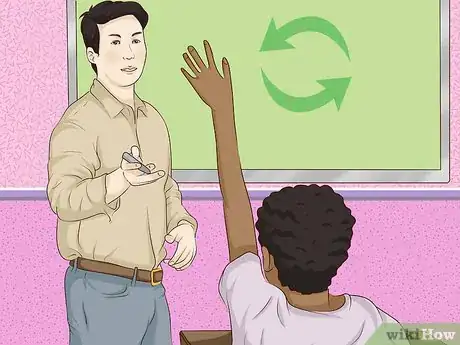
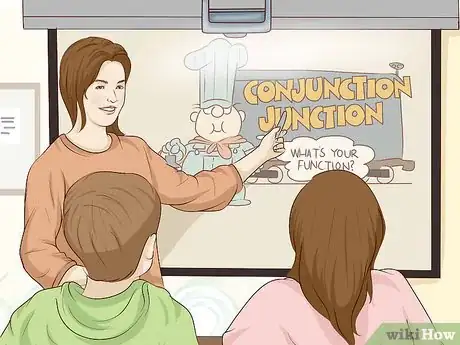
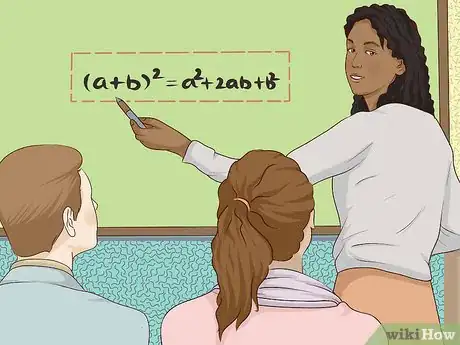
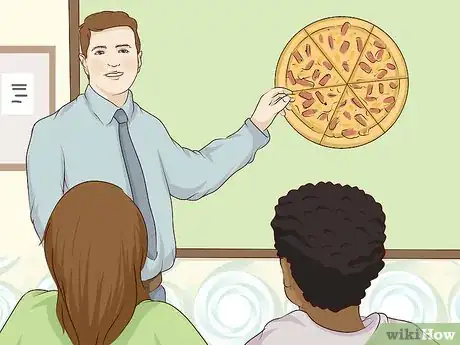
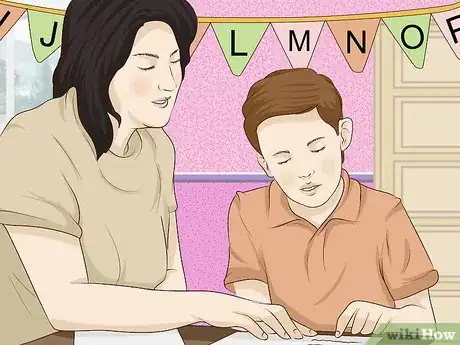

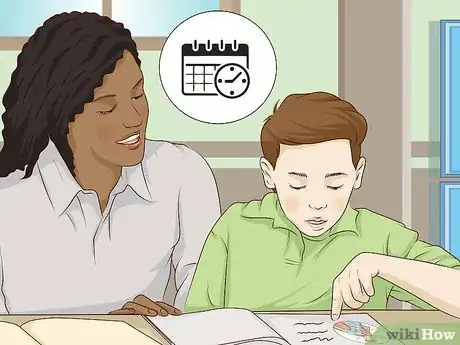
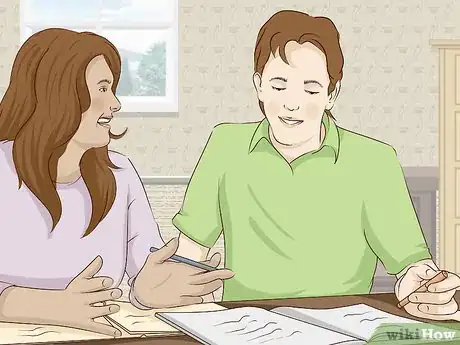

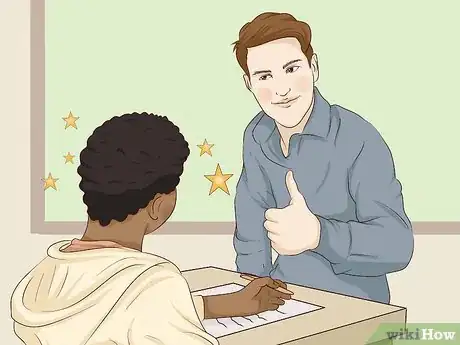
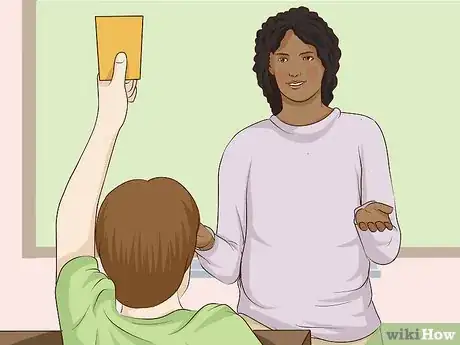
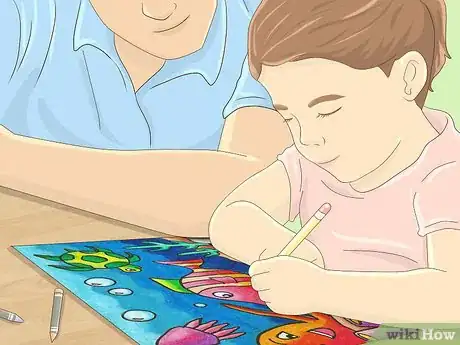
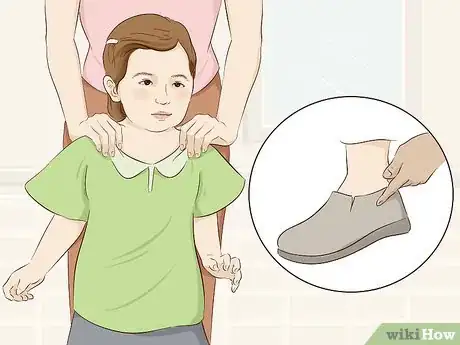

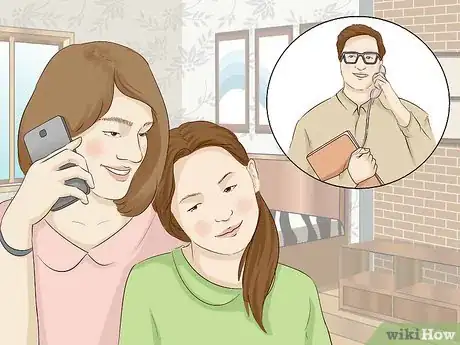
-Step-8-Version-3.webp)

